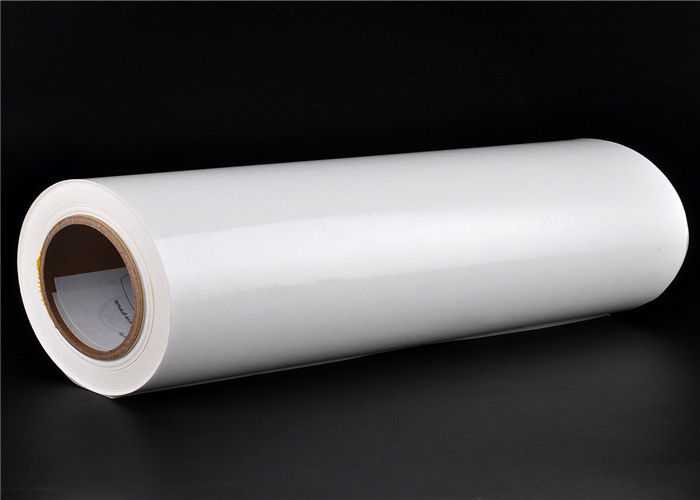Thermoplastic adhesive film is a versatile and efficient bonding solution that is widely used in a variety of industries, such as the packaging industry, the textile industry, the automotive industry, the aerospace industry, and the electronic industry. It offers a reliable and sturdy connection that is able to withstand the effects of harsh environments. In this piece, we will go into detail about the various types of thermoplastic adhesive film, their properties, and the applications for using them.
 Thermoplastic adhesive film in its various forms
Thermoplastic adhesive film in its various forms
On the market, one can choose from a variety of thermoplastic adhesive film types, each of which has its own set of qualities and attributes that set it apart from the others. Let's take a look at some of the thermoplastic adhesive film that is most commonly used:
Thermoplastic Adhesive Film Made of Polyurethane (PU) Polyurethane thermoplastic adhesive film is a strong and versatile bonding solution that can bond a wide range of materials including fabrics, plastics, and metals. It has a high adhesion strength and is resistant to heat, moisture, and chemicals. Additionally, it has a long lifespan. The automotive, footwear, and apparel industries all make frequent use of PU thermoplastic adhesive film in their production processes.
Thermoplastic Adhesive Film Made of Ethylene-Vinyl Acetate (EVA) Ethylene-vinyl acetate (EVA) thermoplastic adhesive film is a bonding solution that is used in the textile industry to bond fabrics and materials together. This bonding solution is soft and flexible. It has a high adhesion strength, and it is resistant to both washing and drying. In the footwear, apparel, and sportswear industries, a thermoplastic adhesive film made of EVA is frequently used.
Thermoplastic Adhesive Film Made of Polyamide (PA) Polyamide (PA) thermoplastic adhesive film is a high-performance bonding solution that is utilized in the automotive as well as the aerospace industries. It is resistant to heat as well as chemicals, and it has excellent adhesion strength. In the process of bonding composites and other structural components, PA thermoplastic adhesive film is frequently utilized.
Thermoplastic Adhesive Film Made of Polyester (PET) PET thermoplastic adhesive film is a bonding solution that is used in the electronic industry. This bonding solution is clear and transparent. It has a high adhesion strength and can withstand both heat and moisture without breaking down. Touch panels, displays, and circuit boards are typically bonded together with the help of PET thermoplastic adhesive film.
Thermoplastic Adhesive Film Characteristics and Their Properties
Because of its many beneficial properties, thermoplastic adhesive film is a widely used solution for bonding in a wide variety of business sectors. Take a look at some of these real estate offerings, shall we?

Thermoplastic adhesive film's many benefits to its users
In comparison to other adhesive technologies, such as tapes and liquid adhesives, thermoplastic adhesive film has a number of benefits that make it superior. Several of these benefits include the following:
Thermoplastic adhesive film has a quick bonding time, and it can form a connection that is both robust and long-lasting in a matter of seconds. Because of this, time and money spent on labor may be reduced.
Thermoplastic adhesive film is extremely versatile because it can be used to bond many different substrates, including metals, plastics, fabrics, and paper. Additionally, it is able to bond materials that are not similar.
Thermoplastic adhesive film is simple to use and requires very little in the way of preparation before application. It is simple to cut to the desired dimensions, and a laminating machine or heat press can be used to apply it to the substrate.
Thermoplastic adhesive film doesn't need any messy liquid adhesives or time-consuming curing processes because it doesn't require them. This makes it both clean and efficient. It is a solution for bonding that is both clean and effective, and it can save both time and money on labor costs.
Thermoplastic adhesive film provides a bond that is both strong and long-lasting, and it is able to withstand adverse conditions such as high temperatures, high levels of humidity, and chemical exposure.
Thermoplastic Adhesive Film's Drawbacks and Implications
Even though there are numerous benefits associated with using thermoplastic adhesive film, there are also a few drawbacks that should be taken into consideration. These are the following:
Thermoplastic adhesive film may not be appropriate for bonding large surfaces or complex shapes due to the limited bonding surface it offers.
Because of its limited temperature range, thermoplastic adhesive film is probably not the best choice for applications that call for resistance to extremely high temperatures.
Using thermoplastic adhesive film might necessitate investing in pricey specialized equipment, such as a heat press or a laminating machine, which is one of the costs associated with using this material.
Concerns for the Environment There is a possibility that certain varieties of thermoplastic adhesive film contain substances that are detrimental to the natural environment.
Thermoplastic adhesive film and its applications
Thermoplastic adhesive film is simple to work with and needs very little in the way of preparation. The use of thermoplastic adhesive film can be broken down into the following steps:
Ensure that the surface to be bonded is clean and free of any dirt, dust, or grease before beginning the bonding process. Clean the surface. Because of this, the connection will be very sturdy.
Reduce the size of the thermoplastic adhesive film to the desired dimensions by using a cutting instrument or a laminating machine to reduce the size of the thermoplastic adhesive film.
Position the adhesive film: Position the thermoplastic adhesive film onto the surface that is going to be bonded, making sure it is in the correct position.
Utilize a heat press or a laminating machine to apply heat and pressure to the surface you are working on. Both the materials being bonded and the thermoplastic adhesive film being used will determine the appropriate temperature and pressure for the bonding process.
After the thermoplastic adhesive film has been applied, wait for it to cool completely before proceeding with the finishing steps. Make use of a cutting instrument to remove any excess thermoplastic adhesive film.






